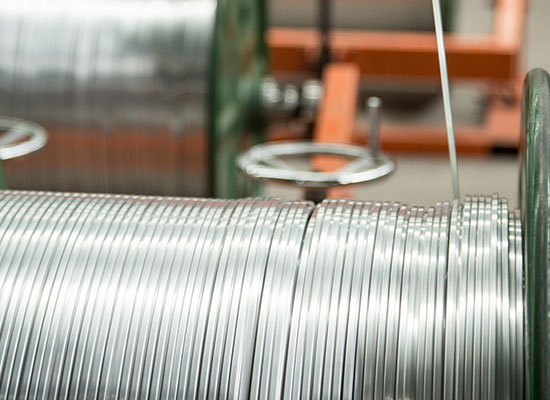On a normal enameling machine, most of the operator’s energy and physical strength is consumed in the pay-off part. Replacing the pay-off reel makes the operator pay a lot of labor. When changing the wire, the joints are prone to quality problems and operating failures. The effective method is to pay off the line in large capacity.

The key to pay-off is to control the tension. When the tension is large, it not only thins the conductor, but also makes the surface of the wire lose its brightness, and also affects many properties of the enameled wire. From the appearance, the thinned wire, the coated enameled wire has a poor gloss; from the performance point of view, the elongation, resilience, flexibility and thermal shock of the enameled wire are all affected. If the pay-off tension is too small, the line is easy to jump, causing the line to be paralleled and the line to touch the furnace mouth. When paying off, the most fear is that the tension in the half circle is large, and the tension in the half circle is small, which will not only make the wire loose, broken, and stretched section by section, but also cause a large jump of the inner wire of the oven, resulting in the failure of splicing and touching the wire. Pay-off tension should be uniform and appropriate.
Installing a booster wheel in front of the annealing furnace helps a lot in tension control. The maximum non-stretching tension of soft copper wire is about 15kg/mm2 at room temperature, and the maximum non-stretching tension is about 7kg/mm2 at 400°C; the maximum non-stretching tension at 460°C is 4kg/mm2; The extension tension is 2kg/mm2. In the normal enameled wire coating process, the tension of the enameled wire is obviously less than the non-extension tension, which is required to be controlled at about 50%, and the pay-off tension is controlled at about 20% of the non-extension tension.
Large-sized and large-capacity spools generally use radial rotary pay-offs; medium-sized wires generally use over-end or brush-type pay-offs; micro-sized wires generally use brush-type or double-cone sleeve-type pay-offs.
No matter which pay-off method is used, there are strict requirements on the structure and quality of the bare copper wire spool.
– The surface should be smooth to ensure that the wire is not scratched
– There are r angles with a radius of 2-4mm on both sides of the shaft core and the inside and outside of the side plate to ensure that the line can be released evenly during the pay-off process
– After the spool is processed, it must be actuated and statically balanced
-The diameter of the shaft core is required for the brush pay-off: the diameter of the side plate is less than 1:1.7; the pay-off at the over-end is required to be less than 1:1.9, otherwise the wire will be broken when the wire is paid off to the core.
